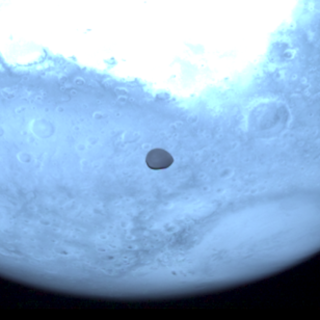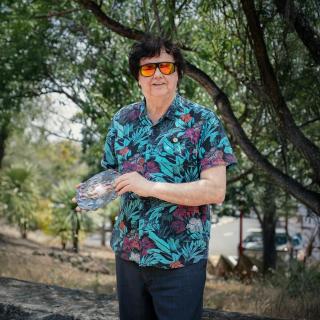It may interest you
-
 A multidisciplinary team of astrophysicists, neuroscientists, engineers, and musicians has unveiled a pioneering method to “listen” to the structure of the human brain. Published in Nature Scientific Reports , the study presents the first higher-order sonification applied to structural magnetic resonance imaging (MRI) data. This technique involves transforming three-dimensional information about the brain into sound, taking into account the spatial relationships and complex structure of the data. To do this, mathematical tools originally developed to study the large-scale structure of theAdvertised on
A multidisciplinary team of astrophysicists, neuroscientists, engineers, and musicians has unveiled a pioneering method to “listen” to the structure of the human brain. Published in Nature Scientific Reports , the study presents the first higher-order sonification applied to structural magnetic resonance imaging (MRI) data. This technique involves transforming three-dimensional information about the brain into sound, taking into account the spatial relationships and complex structure of the data. To do this, mathematical tools originally developed to study the large-scale structure of theAdvertised on -
 ESA’s Hera mission for planetary defense performed a flyby of Mars, as part of its gravitational assistance manoeuvre to shorten its journey to the binary asteroid system Didymos. During the flyby, the spacecraft came around 5000 km from the surface of Mars, having also the opportunity to obtain images of its two moons, Deimos (during the approach) and Phobos (when departing Mars). Julia de León, Javier Licandro, and George Prodan, researchers at the Instituto de Astrofísica de Canarias, participate in this mission, successfully launched from Cape Cañaveral, Florida (USA) on October 7, 2024Advertised on
ESA’s Hera mission for planetary defense performed a flyby of Mars, as part of its gravitational assistance manoeuvre to shorten its journey to the binary asteroid system Didymos. During the flyby, the spacecraft came around 5000 km from the surface of Mars, having also the opportunity to obtain images of its two moons, Deimos (during the approach) and Phobos (when departing Mars). Julia de León, Javier Licandro, and George Prodan, researchers at the Instituto de Astrofísica de Canarias, participate in this mission, successfully launched from Cape Cañaveral, Florida (USA) on October 7, 2024Advertised on -
 Next Friday, May 23, at 17:30, the Museum of Science and the Cosmos of Tenerife will host the popular science lecture "The James Webb Telescope: Highlights and Life Beyond Earth," delivered by the renowned British astronomer Martin Ward, Emeritus Temple Chevallier Professor of Astronomy at the University of Durham (UK) and Fellow of the Royal Astronomical Society . This event, organised as part of the European ExGal-Twin Project , will offer the public a unique opportunity to learn about the most significant advances made by the James Webb Space Telescope, the largest and most powerfulAdvertised on
Next Friday, May 23, at 17:30, the Museum of Science and the Cosmos of Tenerife will host the popular science lecture "The James Webb Telescope: Highlights and Life Beyond Earth," delivered by the renowned British astronomer Martin Ward, Emeritus Temple Chevallier Professor of Astronomy at the University of Durham (UK) and Fellow of the Royal Astronomical Society . This event, organised as part of the European ExGal-Twin Project , will offer the public a unique opportunity to learn about the most significant advances made by the James Webb Space Telescope, the largest and most powerfulAdvertised on
